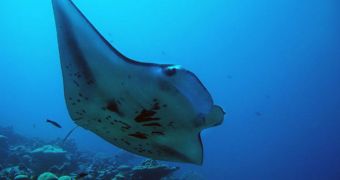A group of investigators at the Stanford University says that it has recently discovered the longest land-sea ecological chain in the world. Often invisible, these chains connect habitats and species around the world, and many of them are currently threatened with extinction.
Perhaps the most obvious trait of these chains is their intricacy and complexity. Figuring out how species and their habitats interact within ecosystems is the purpose of an important field of science, called ecology.
When Stanford experts Douglas McCauley and Paul DeSalles set out to conduct an ecological survey, they were not searching for the longest ecological chain in the world. However, working together with former students and faculty at the university, this is exactly what they did.
The research group published details of its discovery in a paper published in the latest issue of the top journal Scientific Reports. The data can now be used to quantify the influences humans have on the natural world, something that has been a subject of heated debate in the international community.
What the team found is that disruptions of ecological interaction chains are extremely widespread and severe. The study also suggests that previously unrelated aspects of conservation efforts may need to come together, if ecosystemic problems are to be addressed across borders.
“This is an incredible cascade. As an ecologist, I am worried about the extinction of ecological processes. This dramatically illustrates the significance of such extinctions,” expert Rodolfo Dirzo says of the new study.
The researcher holds joint appointments, as a professor of environmental science, and a senior fellow, with the Stanford Woods Institute for the Environment. The new study was carried out in the remote Palmyra Atoll, in the Pacific Ocean. The area is largely undisturbed by human presence.
Scientists surveyed interactions between manta rays, huge gray reef sharks, snappers, barracudas, thousands of birds and countless native, non-native and invasive tree species. The group used nitrogen isotope analyses, animal tracking and field surveys to compile an image of the ecological chain.
The group found that replacing native trees with non-native palms, for example, had a cascade of effects in the ecosystem. This led to fewer roosting birds, less droppings in the soil, reduced soil fertility, less nutrient rundowns into the water, fewer plankton and fewer manta rays.
“What we are doing in some ecosystems is akin to popping the hood on a car and disconnecting a few wires and rerouting a few hoses. All the parts are still there – the engine looks largely the same – but it's anyone's guess as to how or if the car will run,” McCauley says.

 14 DAY TRIAL //
14 DAY TRIAL //